#Another anagram: Radagon = Argon Da
Text
Elden Ring and Tolkein's Legendarium
In a way, Elden Ring as a game can be viewed a deconstruction of all things common in "fantasy".
It has been said that the Lord of the Rings is the origin of the high fantasy genre. The first step of a deconstruction (or of duplicating results) is to look at a thing and examine the elements it is made of. The more general the better - the goal is to find the things that inspired the thing:
The setting is inspired by research into many real world mythologies and folk tales. And Tolkein's religious beliefs as a Catholic.
Tolkein invented full language systems that were used to add extra significance to the names of people and places
The personal history and psychology of the author had an undeniable influence on the themes of the story (when Tolkein writes about the devastation of war it is from a place of sincerity - because he lived it)
So, these are the ingredients of a successful fantasy story that also apply to Elden Ring - draws parallels to previous fantasy stories, use of exotic words and naming schemes that are internally consistent as parallel to the real world, and incorporates psychologically-driven themes (in the case of Elden Ring I believe that it is less of the psychology of a person and more about drawing on the psychology of the gaming company FromSoftware...but that is a topic covered in other posts).
But regarding the works of Tolkein there are a few more...explicit parallels to be drawn. Which for legal reasons regarding the rights to adapt Tolkein's Legendarium will likely never ever be confirmed by FromSoft. But as I see it getting references under the radar of the copyright lawyers is a time honoured tradition of fantasy stories so I will attempt to explain these connections as I see them, regardless.
A linguistic connection is formed in the space between two main points that I am aware of: Gelmir of Nargothrond as the possible naming inspiration for Mt. Gelmir, and geographical region "Taur-en-faroth" containing part of the name used for Fort Faroth.
Gelmir
"J.R.R. Tolkien has become a sort of mountain, appearing in all subsequent fantasy in the way that Mt. Fuji appears so often in Japanese prints. Sometimes it’s big and up close. Sometimes it’s a shape on the horizon. Sometimes it’s not there at all, which means that the artist either has made a deliberate decision against the mountain, which is interesting in itself, or is in fact standing on Mt. Fuji." - Terry Pratchett
First addressing Gelmir - literally the volcanic mountain is a reference to Tolkein. As clear of a declaration as possible that Elden Ring intends to stand on Mt. Fiji.
Gelmir in the "canon" version of the Legendarium was an elf of Nargothrond who was captured by the forces of Morgoth at the "Battle of Sudden Flame" which was the fourth great conflict in the War of the Jewels (the war over the 3 silmarils for which "the Silmarillion" is named). He was subsequently blinded and tortured for 17 years until his death - after having his limbs cut off to taunt his brother Gwindor into attacking recklessly - at the start of the fifth great conflict known as "The Battle of Unnumbered Tears". Gwindor himself was captured and held prisoner for an additional 17 years after this battle, before escaping at the expense of having a hand cut off and eventually dying in another battle of the war. He was in love with a golden-haired elf maiden named Finduilas (name meaning "hair of spring leaf") who he also called "Faelivrin" meaning "Gleam of the Sun on the Pools of Ivrin" ("Pools of Ivrin" being a location in the land called Beleriand). She was killed before the end of the war by being nailed to a tree with a spear.
For context, the sixth great conflict was called "The War of Wrath" and was the final one. Morgoth brought dragons to the battle to blast the battlefield with fire and lightning - which had never been done in any previous battle - and the outcomes were that Morgoth was beheaded and kicked through a portal into the void and the northwest corner of the map including almost all of Beleriand (an area equal to the size of the entire Middle Earth map at the time of the Lord of the Rings story!) sunk into the ocean.
There is a lot to work with here already - first being Gelmir's associations with flame and imprisonment and torture that are shared by both Tolkein's and Elden Ring's purposes. Blindness is noteworthy, considering how often this is a theme with Elden Ring characters and even partial blindness is enough to cause madness as indicated by the Prisoner Helmet. Taking a few lateral steps arrives at a golden haired maiden who shares the method of execution used for Marika. And her name meaning "gleam of the sun on the surface of the water" exactly describes the imagery seen in the Elden Ring item "Memory of Grace".
But there's still more to spin from this line! Because Finduilas had another lover named "Túrin Turambar" who was a friend of Gwindor and whose family line had been cursed by Morgoth. Túrin owned a magic helm upon which was perched an image of the Golden Dragon Glaurung - similar to the style of helmet worn by Elden Ring's Banished Knights - and which allowed him to survive dragon fire. Túrin found on the grave of Finduilas a naked woman who he called "Níniel" or "Maiden of Tears" - because she had lost her memory and was crying - and wed her with neither knowing that they were estranged brother and sister (this is based on the Finnish story of Kullervo, with which Tolkein was especially fascinated). This was revealed to them later to be a machination of Glaurung when Túrin was in the midst of slaying the dragon, and subsequently both Túrin and Níniel self-destructed. Before meeting his end, Túrin also described himself in (probably) poetic terms as having blindness being the curse placed upon him by Morgoth, which is assumed by readers to be more a matter of tunnel vision or short sightedness rather than literal blinding. He is also apparently prophesied to return to life someday in the supplementary materials.
What this means exactly for Elden Ring is up to interpretation. A story could be spun by combining Gelmir, Gwindor, and maybe even Túrin into a single character who are motivated by unrequited and/or incestuous love - to fill in the empty spaces around the characters of Marika, Radagon, and Godfrey. But there is even more nuance here because there are the alternate Gelmir's to consider.
In one version, Gelmir was king of the gnomes, by which Tolkein was inspired by the Greek "gnōmē" meaning "thought" or "intelligence". But this was dropped due to the cultural confusion with gnomes being wrinkly little creatures.
In another version Gelmir was the same character as Finwë, an elf who was born during the "Years of the Trees" that preceded the era called the "Years of the Sun". At this time, the light of the world was confined to the Lands of the Valinor (a pantheon of Creator types) in the west provided by the female golden tree named Laurelin in the south and the male silver tree Telperion in the north. Finwë's wife was a weaver named Míriel Therindë and his son Fëanor was responsible for forging the Silmarils and jealously guarding them (And also he invented the 7 palantíri scrying stones + 1 master stone, and the Tengwar writing system). The grandson of Fëanor and last of his line was Celebrimbor, meaning "silver fist". Celebrimbor forged the three rings for the elves (named for air, fire, and water) that were subject to the One Ring but never corrupted by it. So, yeah, it's possible that "Gelmir" is selected for being a seemingly niche character who was actually in another lifetime very closely connected to these core events of the history.
The 3 Silmarils contained the remaining light of the two trees that were destroyed and had the sun and moon forged of their fruits by blacksmith Aulë. When the trees were first made they were sung into existence by Yavanna and watered by the tears of Nienna (who was a teacher of the wizard Gandalf and in earlier versions of the Legendarium called "Queen of Shadow"). Nienna again wept healing tears upon the trees to grow the fruits when they were dying. Morgoth stole the Silmarils and set them into his Iron Crown, and upon his defeat the stones were pried out and the crown beaten into a collar for his neck (in the brief period of time before he was kicked into the void anyways). One Silmaril was thrown into the sky where it became the Evening Star. Another was cast into the sea. And the third was cast into a firey pit in the earth along with its possessor.
And as an addition, it is not farfetched that Morgott = Morgoth is an intended spiritual parallel. Considering that Morgoth was indirectly responsible for the blinding and killing of Gelmir (brother of Gwindor) in Tolkein's mythic history. And in Elden Ring this seems expressed in the Shattering War though Morgott pursuing Mt. Gelmir most fiercely. Also, Morgoth was the identity taken by Melkor after he was released from the chains made to bind him by Aulë, which is paralleled by Morgott being the name used by the previously bound Margit (it is called 'Margit's Shackle').
Faroth
"Faroth" is a Sindarin word meaning "hunters". The "Hills of the Hunters" (Taur-en-faroth) was a location in West Beleriand, the aforementioned western part of the continent that sunk into the ocean at the end of the War of the Jewels. In these hills was hidden the secret elven city of Nargothrond. The same from which Gelmir of Nargothrond is associated. The city began as a Dwarven Hall for the petty dwarfs (exiled and unsociable dwarfs smaller than typical dwarfs), was conquered and ruled by the House of Finarfin (a son of Finwë), and was sacked and turned to the lair of the dragon Glaurung some time after The Battle of Unnumbered Tears. And then fell into the ocean.
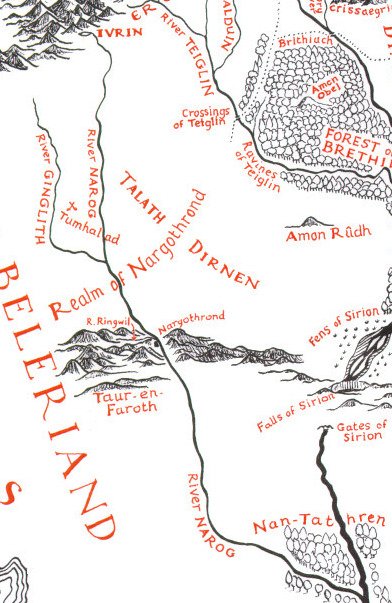
At this point there are too many names, so I sketched a family tree of all of these elves:
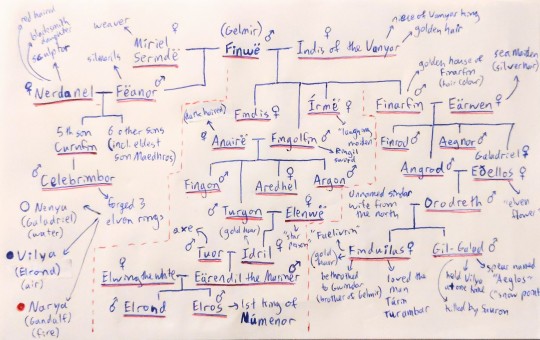
Some general trends:
Of the 3 family lines the middle one has significance for being the one to produce the Númenor Kings of Men
The family lines at the two sides have plot significance as discussed in the Gelmir section, but then just kindof die off.
Typically only the male lines matter for continuity, except for Idril in the 3rd generation removed from Finwë. The origins of the women spouses and daughters mostly are otherwise not mentioned or appear and disappear as needed from the aether (with 3 exceptions: Indis has a famous uncle, Nerdanel has a significant blacksmith father, and Eärwen's extended family has some substance to it)
If a writer wanted to do a legally distinct take on this mythology while borrowing from it for whatever reason, it would be easy to condense the feats and characterization of these 3 lineages into one truncated one. Maybe fuse Finduilas with Idril - two blonde ladies with minimal character - and also fuse together their lovers and you have a Marika + Godfrey. The narratively satisfying thing about Finduilas being associated to Gwindor (who is practically the same character as Gelmir) is that it creates a closed loop for the whole lineage when Gwindor/Gelmir is substituted for Finwë, which is a very attractive proposition for a story where time is a wheel and regression to the origin point is a principle of the Golden Order.
Also this region calls attention to the significance of the river Ringil. That word comes up as: 1) a mountain river through Taur-en-Faroth that is tributary to the Narog river, 2) a sword held by Fingolfin (another son of Finwë), and 3) as the primordial tower - possibly made of ice - upon which sat the south lamp Ormal (an orb containing the gold light of the world in the First Age that would later pass to the gold tree Laurelin in the Second Age). In an earlier version of the writings. The blacksmith Aulë created the lamps at the request of Yavanna, who was herself responsible for the growth of fruits and trees. The end of the "Days before Days" (which preceeded the "Years of the Trees") occurred with the breaking of the lamps by Melkor, after a period of time where he had poisoned the land and caused the things made by Yavanna to rot.
There is a confusing timeline here in the early history with spans of time lit only by the stars between the destructions of these various sun/moon light sources, with Yavanna singing all living life to sleep due to the lack of light except maybe the elves are still awake and doing things? The lamp and tree stuff and a bunch of elf stuff happens before the First Age of history, but the start of the First Age is also called "The Awakening" so again I don't grasp the sleep thing. Aulë was also responsible for creating the "Seven Fathers of the Dwarves", but he made them too early and they had to go to sleep so that the elves of Ilúvatar could pretend to be the first sentient mortal life? I have lost interest in interpreting the mythic timeline, so I'll just end this with more context for the lamps:
"In the middle of Arda, where the light of the lamps mingled, amid the Great Lake lay the Isle of Almaren, where the Valar dwelt." - The One Wiki to Rule them All
"In J.R.R. Tolkien's older writings (not used in the published version of The Silmarillion), the Valar sought peace with Melkor, asking his assistance with fixing the lamps upon Arda. Melkor, still envious and hateful of the rest of the Valar, agreed to give them a strong, sturdy substance. He gave Aulë ice. Melkor permitted the Valar to do as they wished until the fateful day when the Lamps' light and heat finally melted the ice. The pillars crashed upon Arda, flooding it with water and darkness." - The One Wiki to Rule them All
I suppose that if I have a point here it is that Radagon's Sore Seal talisman is found at Fort Faroth, which through the winding etymology of words is tied to Mt. Gelmir. Perhaps the blind Radagon was a hunter on a fruitless quest seeking the lost light of the Golden Sun from the days before days - guided by the distant memory of the reflection of it's light on the water. Perhaps there is other meaning to be found. After a certain point any interpretation found through these linguistics should be cross-referenced with everything that can be learned from all other sources of information in the game.
The Rings of Power
The big brazen choice - in my opinion - was to name the big metaphysical artefact "the Elden Ring"...and then draw direct parallel to the Rings of Power. Not the 3 rings granted to the Elf Kings under the sky - I've yet to identify how or if those are expressed in game. Not the 9 rings granted to Kings of Men either - those are seemingly represented in the 9 Night's Cavalry (and possibly the 9 weapon talismans that each feature a ring at the top of the head) . What is most relevant here are the 7 Great Runes matching "seven for the Dwarf-lords in their halls of stone".
The first critical part of that phrase is the reference to "stone", as I have brought up previously that the shattering of Marika's Hammer equates to the shattering of the wisdom of stone. But the second point of note is that the dwarf lords of Tolkein received their own curse from holding their rings of power - obsession with gold. A similar obsession is seen in Elden Ring where all of the demigods are corrupted by their great runes and covet the grace of gold.
The arrangement of the Elden Ring also has some synergy with the arrangement of its runes - 6 of the 7 dwarf lords pair nicely through the even numbers. The Seventh Dwarf Lord was the chief among them "Durin the Deathless", who was reincarnated 7 times by being reborn as one of his own descendants. His clan also was generally known to absorb members from all other clans due to his central importance. The first Durin (one of the 7 original fathers of dwarves) built the underground city of Khazad-dûm that would later be called Moria after a creature of shadow and flame that may-or-may-not have wings (a Balrog of Morgoth) was uncovered in its depths by Durin VI. Durin III was the one to receive the Ring of Power from Celebrimbor, and Durin IV was contemporary to the first rise and defeat of Sauron. Durin VII is apparently contemporary to the timeframe of the Lord of the Rings and second defeat of Sauron, though he did not participate and seems to be known instead for reclaiming Khazad-dûm from the orcs.
So what's the point of the elaborate Tolkein parallel? There may be 7 ring-shaped great runes, but there is also clearly one ring that rules them all - the Elden Ring. So examining Tolkein is one of several avenues of analysis reaching the conclusion that the ring is a dangerous object that corrupts everyone who touches it and must be destroyed. Of the six endings the only one that understands this is Ranni's Age of Stars. And in the Lord of Frenzy Flame ending the Tarnished succumbs to the power of the ring with head becoming a ring of flame matching the firey beacon on top of the Frenzy Flaming Tower - itself visually recalling a depiction of the Eye of Sauron atop the tower of Barad-dûr.
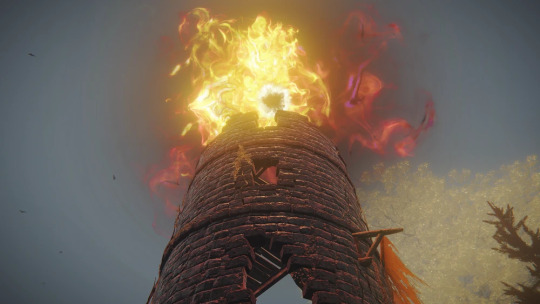
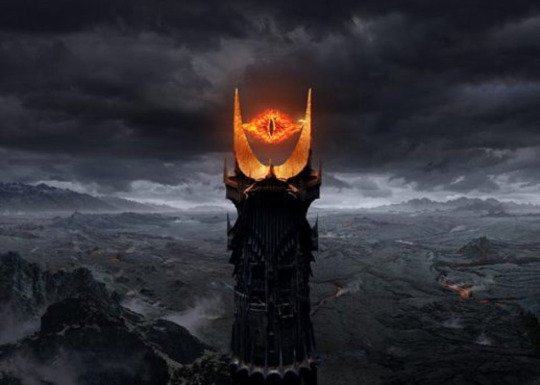
And even more, there's one ring bearer in particular who provides another piece to the puzzle of Radagon and Marika's dual identities. The dissociative identity of Gollum and Smeagol can completely describe the relationship between Marika and Radagon. Two thoughts in one body. With this lens I think that Radagon/Marika were likely not separate entities at the time of their Shattering and may have never had a separate existence. They can appear to hold conversations with each other through reflective surfaces, such as a very shatter-able mirror.
It is quite possible that another Great Rune (or more) will make an appearance in the DLC. If this does happen, I'll re-evaluate Ring of Power theory based on the nature of the added rune.
A Micro Parallel to the Macro Scale
One last note which, again, is oblique enough for plausible deniability. The end of Patches questline would have the Tarnished deliver the Dancer's Castanets to Tanith, inside the volcano. If you know anything about castanets, they are typically made of hard materials such as wood or ivory (or plastic) and carved into a pear shape. Not so for the Dancer's Castanets. From a visual examination these are made of metal cast in a circular shape and with a ring shaped engraving filled with filigree. A metal ring-shaped object delivered to a volcano, echoing the One Ring delivered to Mt. Doom in the Lord of the Rings.
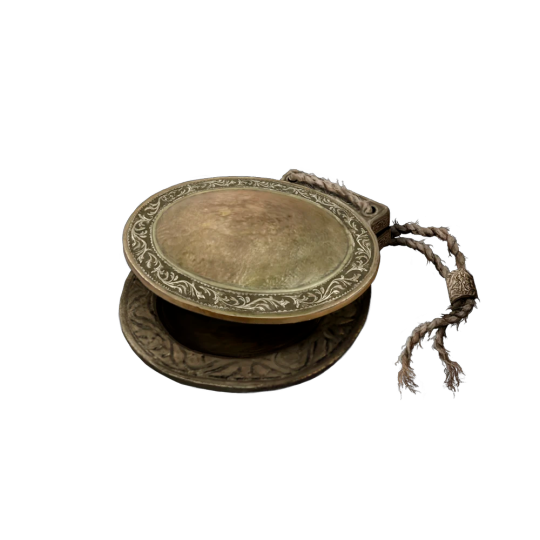
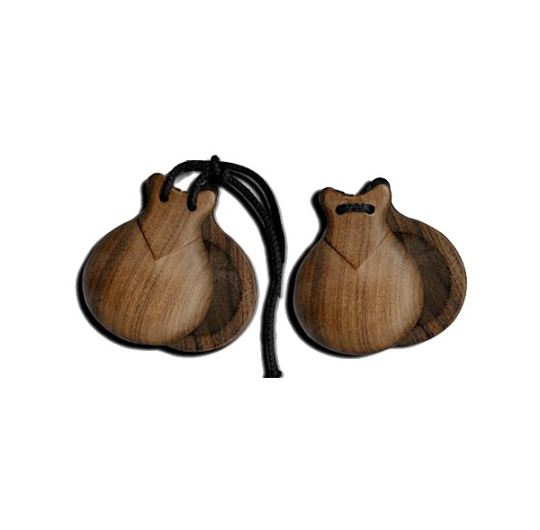
#elden ring#tolkein#elden ring lore#media analysis#Anagram lore: Radagon = a Narog D#D Beholder of Death perhaps#Another anagram: Radagon = Argon Da#Like the sword version of Ringil was wielded by Fingolfin the father of a semi-canon character named 'Argon'#It has a blade that glitters like ice perhaps similar to the 'Frozen Needle' found in the Kingsrealm Ruins#I like when things come in numbered lists such as Durin I to Durin VI matching to the first 6 eras in my ER astrology timeline
5 notes
·
View notes